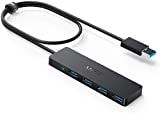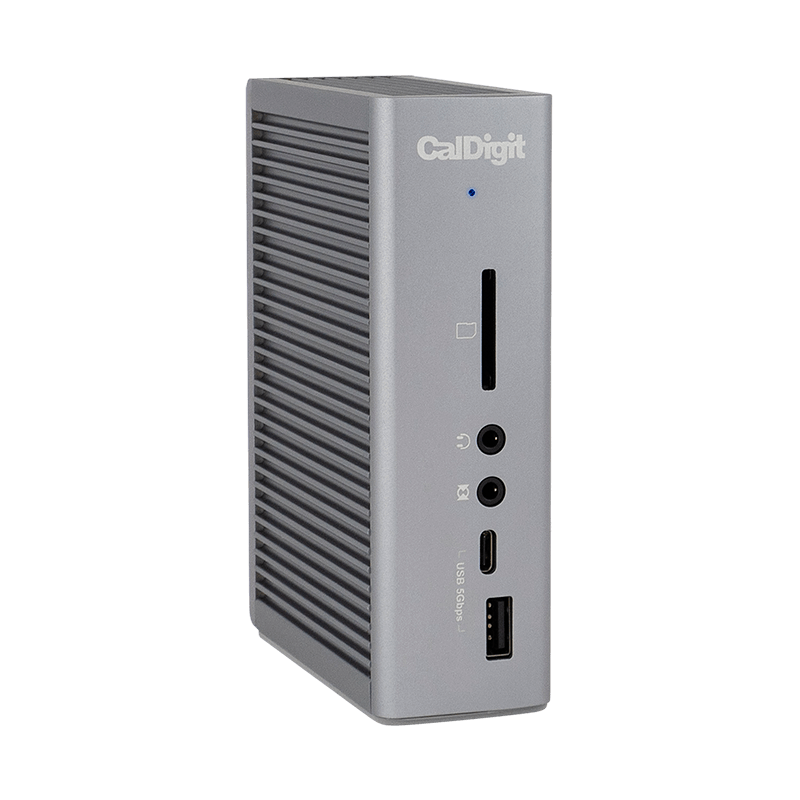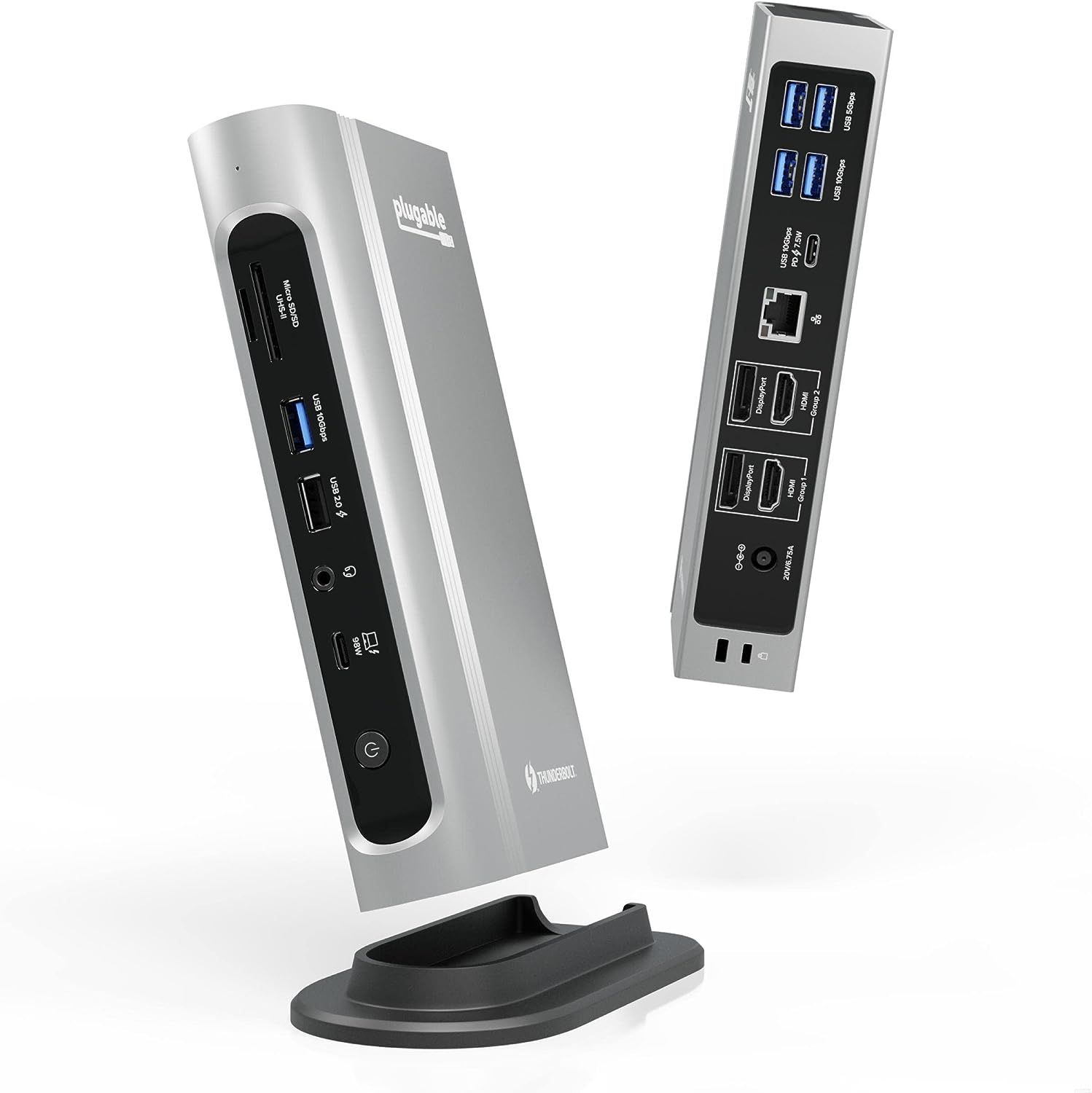Modern laptops and desktops are getting sleeker and stingier with ports. If you’re like me, juggling multiple devices with only one USB port can be frustrating. A USB dock makes life easier by expanding your laptop’s capabilities.
Why I Added a USB Dock to My Setup
If you’ve bought a Windows laptop recently, you’ve probably noticed a trend: fewer and fewer ports. Like MacBooks, modern Windows laptops are leaning toward minimalism, which can leave you struggling to connect to multiple devices. My Windows laptop, for example, has only one USB port, which quickly became an issue. That’s where a USB dock comes in. For me, adding one made my setup much more efficient. It allowed me to connect everything I needed for work, learning, and file management—without juggling cables or adapters.
What is a USB Dock?
A USB dock is essentially a hub that expands your laptop’s connectivity by offering additional ports. You connect it to your PC through a USB or Thunderbolt port, and it provides more options, such as HDMI, Ethernet, USB-C, or SD card slots. Since my laptop only has one USB port, a dock is essential for connecting everything I need, from external hard drives to printers.
There are two types of docks: powered docks (which require an external power source) and unpowered ones that draw power from your laptop. I prefer the unpowered kind since it keeps things simple when moving between rooms.
Expand Your Connectivity: More Ports for More Devices
One of the biggest benefits of a USB dock is the ability to connect multiple devices simultaneously. Before I had one, I constantly swapped cables to manage my external hard drive, phone, and wireless mouse. Now, I can plug in everything—from my printer to USB drives—at once.
Since I rely heavily on my external hard drive to run virtual machines (VMs), the dock ensures everything stays connected without interruptions. It’s also useful for managing frequent file transfers between USB drives and my hard drive.
On-the-Go Convenience
Even though I don’t travel extensively, I take my dock whenever I take my laptop. It’s compact and makes connecting my devices much easier. Rather than carrying multiple adapters, I take my dock to keep everything connected through a single hub.
Charging my phone through the dock is also huge for me in terms of convenience. It keeps my phone within arm’s reach on my desk instead of being stuck at an outlet across the room.
Faster File Transfers and Better Performance
Using a dock with high-speed ports such as USB 3 (or better) has greatly impacted my workflow. Fast file transfers are essential since I run all my VMs directly from my external hard drive. The dock ensures everything works smoothly without any noticeable lag, whether I’m experimenting with new VM setups or transferring large files for backup.
Charging and Organization
Charging my phone via the dock adds a lot of convenience since it stays within reach while I work. It also helps me maintain a more organized workspace. Before I started using the dock, my desk was cluttered with tangled cables from all my devices. Everything connects through one hub, reducing the mess and helping me stay focused.
Choosing the Right USB Dock
When selecting a USB dock, finding one that fits your needs and budget is essential. Here are three options that offer a range of features and prices.
Anker 4-Port USB 3.0 Hub
The Anker 4-Port USB hub is a simple and affordable solution for expanding your laptop’s USB connectivity.

Anker 4-Port USB 3.0 Hub
$10 $18 Save $8
This compact USB 3.0 hub is perfect for adding a few extra ports to desktop computers and laptops alike.
- Four USB 3.0 Ports.
- Lightweight and portable.
- Great for non-USB-C peripherals.
CalDigit TS3 Plus Thunderbolt 3 Dock
The CalDigit TS3 Plus is a versatile dock with 15 ports, including Thunderbolt 3, dual 4K monitor support, and Ethernet.

CalDigit TS3 Plus Thunderbolt 3 Dock
A premium USB dock that offers an enormous variety of ports, including displayport, Ethernet, and USB-C. It also supports power delivery up to 87 watts with a firmware update.
- 2 Thunderbolt 3 Ports
- 1 DisplayPort 1.2 Port
- 5 USB 3.1 Type-A Ports
- 2 USB 3.1 Type-C Ports
- 1 SD Card Reader
- 1 Gigabit Ethernet Port
- 3.5mm Input and Output
- Pricey
- Faster charging rates require a firmware update
- “Only” Thunderbolt 3
Plugable TBT4-UDZ Thunderbolt 4 & USB4 Docking Station
The Plugable Thunderbolt 4 Dock offers quad 4K monitor support, 100W charging, and 2.5Gbps Ethernet.

Plugable TBT4-UDZ Thunderbolt 4 & USB4 Docking Station
A versatile Thunderbolt 4 dock with multiple video output options, blazing fast Ethernet, and plenty of USB ports.
- 2 Displayport and 2 HDMI Ports
- SD and MicroSD Card Readers
- 1 2.5 Gigabit Ethernet Port
- 2 USB-C Ports
- 6 USB-A Ports
- Thunderbolt 4
- 100W Power Delivery
A USB dock is one of the most practical accessories to add to a modern laptop setup. Whether working, learning, or managing VMs, the extra ports and faster connections simplify your workflow and reduce cable clutter. If your laptop has limited ports like mine, a dock makes keeping everything connected and organized easier. With options available for every budget, it’s worth finding one that matches your needs.
